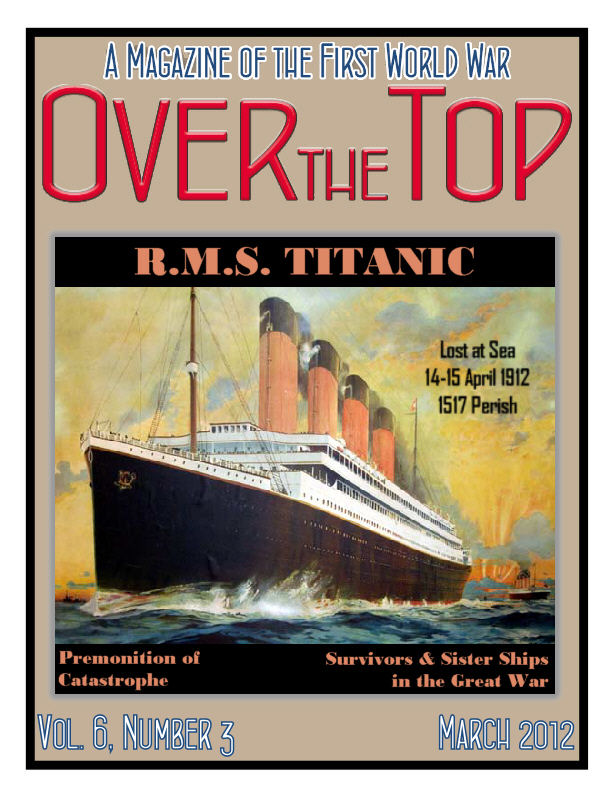


March 1912
Serbian—Bulgarian Alliance
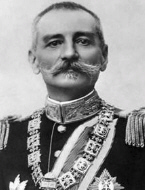
King Peter,
Serbia |
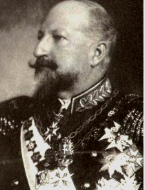
King Ferdinand,
Bulgaria |
The heavy-handed policies in Macedonia of the Young Turks regime (which had come to dominate the declining Ottoman Empire in 1908) and the outbreak of the Turko-Italian War in September 1911 energized—in all the Balkan countries simultaneously—an impulse toward joint action against Turkey. In late 1911, secret negotiations started among Bulgaria, Serbia, Greece, and Montenegro with the objective of expelling the Ottomans from European territory. The most important connection was between Bulgaria and Serbia. A treaty of alliance signed by the ministers and monarchs of both kingdoms was executed on 12 March 1912.
This alliance led to miltary conventions and the formation of a "Balkan Alliance." The first of two Balkan Wars was launched by the Alliance in October and succeeded in expelling the Turks from all Europe except the Constantinople region. The two Balkan Wars of 1912-1913 placed enormous stress on the diplomatic system of the great powers, gave great impetus to Serbia's annexation ambitions, and alarmed Austria-Hungary.
|
TRENCH REPORT: Sometime in the next few weeks the World War One Historical Association will take a big step in its history. The organization will initiate the biggest (although not final) stage of its new website. A number of readers have asked why this has taken so long. Recall that our organization is the product of the merger of The Great War Society and the WFA-U.S. Branch. Both of those groups had their own websites involving hundreds of pages and thousands of images combined. Of course, we wanted to keep the best of both sites. After eliminating the redundant and non-essential pieces, we will be keeping about 60% of those totals, revising each page with new the new design and identifying data, adding new pages for operating the current organization, and installing a new navigation system tying it all together. That being said, we are close to having all our key pages available for you. Trip-Wire subscribers will receive a special email announcement when that takes place. Please send me your comments when you visit the new site. MH
New at Our Own & Our Friends' Great War Websites
Click on Title or Icon to Access
|
News About the Organizational Website(s)
All the former websites of the WFA-USA and TGWS are being consolidated at the new site of the World War One Historical Association where you can download a mail-in membership registration form:
ww1ha.org.
We have implemented a PayPal registration feature for those who wish to pay online. The larger consolidation process will take several months, but all critical information will always be accessible at their new addresses (URLs). For those pages being moved to the new site we will also provide email contacts for those who may have questions. Below is a list of our scheduled activities with contacts:
|
San Francisco Bay Area Chapters (website)
The Bay Area three chapters have meeting on one or more Saturdays every month. See the schedule on the above website or contact Sal Compagno at:
email: sal00@mindspring.com
New England/New York Chapter Seminar (website)
New England Air Museum
Windsor Locks, CT - 10 March 2012
Contact: Guy Cavallaro
email: Ph1m2h3@aol.com
tel: 845-485-8217
Florida-Gulf Chapter Seminar (program in pdf format)
War on the Eastern Fronts
Tampa: 16-17 March 2012
Contact: Len Shurtleff
email: lshurtleff@aol.com
tel: 352-379-3200
WW1HA National Seminar
USMC University, Quantico
7-8 Sept. 2012
Contact: Carol Vandenbrul
email: cvandenbrul@netscape.net
tel: 248-471-2366

Iron Mike and the town of Quantico will be welcoming us to our next seminar in September. Click on the image above to download a program and registration information.
|
|
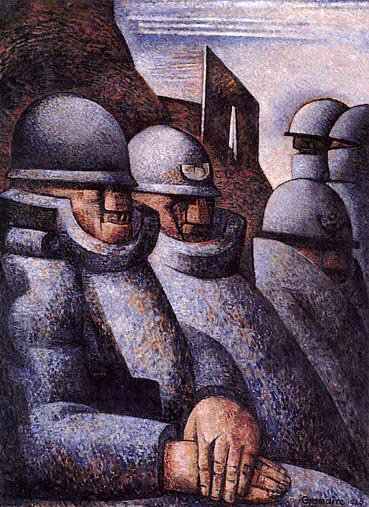
Marcel Gromaire, La guerre, 1925
|
GREAT WAR 2011 EVENTS CALENDAR
|
|
We are redesigning our Events Calendar. See left column for World War One Association Activities. Please keep sending us announcements, they will be included when we unveil the new calendar.
|
Send additions/corrections for our 2012 schedule:
Email Response
|
This Month's Internet Feature
Trench Railways
Essential for supplying the front in the Great War, narrow-gauge (light) rail lines had eevolved from the effective use of rail in the U.S. Civil War.Researched by Robin Clayton. His article will appear in a future issue.
The French Decauville System
Trench Railways at Wikipedia
Trench RR Equipment
U.S. 20th Engineers
Company D, 21st U.S. Engineers
Trench RR Video

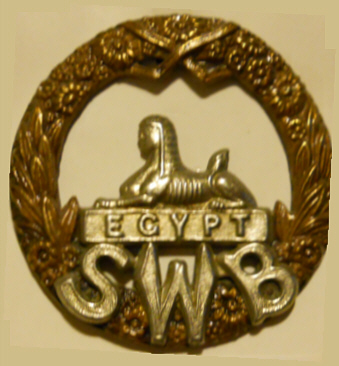
The badge Honour of the Sphinx, usually with the legend "Egypt," is the one accorded to the most units of the British Army — save the Royal Crown. It was awarded to 31 formations for service in the Egyptian Campaign of 1801, the first British defeat of a Napoleonic army. One of these units, the South Wales Borderers was formed in 1689. Their first 190 years seemed to be one misadventure after another—they were participants in at least five surrenders (including Saratoga and losing their colors to the Sikhs in 1846). In 1879 they became doubly famous for the battle of Isandlwana (one of the greatest defeats inflicted on British arms) and the epic stand at Rorke's Drift (one of the greatest victories), where members of the unit won seven VCs. For that action (and a futile effort to save the colors at Isandlwana,) the unique "Wreath of Immortelles" was conferred. Nevertheless, the SWB may have been the only line regiment to have lost its colors in battle twice. Stationed in China in 1914, a SWB battalion was part of the Japanese-led force that captured Tsingtao, the only British land action in the Far East. This same unit landed at Gallipoli on 25 April 1915. Seven men from the SWB would receive the VC in the Great War. From Jim Patton.

The First World War [for France] may have been morally untroubling, but it left scars too deep to touch for a long time: In addition to the five million men killed or wounded, there were hundreds of thousands of war widows and their children, not to speak of the shattered landscape of northeastern France. For many decades World World War I lay, as it were, in purgatory—rememberd but hardly celebrated. Only recently have the battlefields of the Western Front become sites of more confident commemoration.
Tony Judt, Reappraisals
|
|
|
Page Two
|
|
|
|
(This News Surprised Your Editors)
Jozef Kowalski, 112, Veteran of BOTH World Wars, Honored

I guess I need to stop announcing that there are no surviving WWI veterans. At his birthday bash in western Poland on 2 February, Cavalryman Jozef Kowalski received his promotion from 1st Lieutenant to Captain. He is pictured above in a portrait of the young Lt Kowalski and at his 110th birthday party, when he was decorated by the new Polish government for his service. (link)
|
|
The WW1HA Meets Social Media
Our Camaraderie editor Susan Hall-Balduf has bravely led the World War One Historical Association into uncharted (for us) territory. We now have our own Facebook page and Blog. Please visit the two new sites by clicking on the images. If you would like to receive the postings, click "Like" on Facebook and the "Follow" icon at the bottom of the blog page. Some great material is already showing up on the two pages.
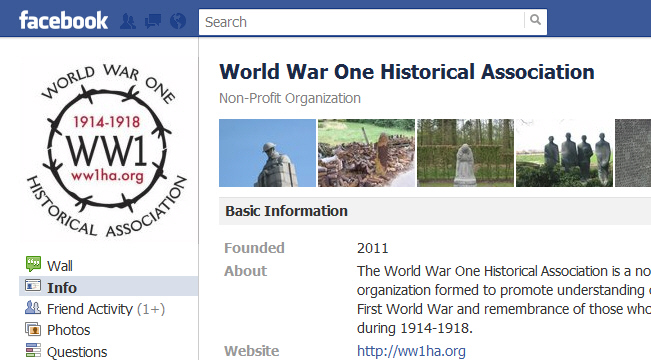
www.facebook.com/pages/World-War-One-Historical-Association/296321097080349
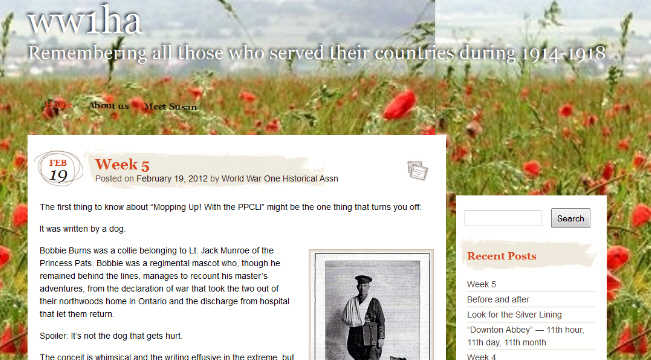
ww1ha.wordpress.com/
|
|
|
|
Tales of Three Museums
1. Our Journey Through the Musée de la Grande Guerre
Somewhat before this year's winter trip to Paris, we read in the New York Times that the prime minister of France had just opened a museum just outside Paris dedicated to portraying the Great War. The museum, Le Musée de la Grande Guerre, is located in Meaux, a half-hour train ride from Paris, a reasonable 15-Euro journey). The trains, considered commuter trains, run around every half hour from the Gare de L'Est. We had read that the opening on 11 November advanced the planned opening of the museum, and it therefore should not have been a surprise that, while there were signs that indicated such a museum was in Meaux, the station ticket agent in Meaux had limited knowledge about it. She found information on the museum in a loose leaf binder and sold us bus tickets (bus route #6) that would deposit us at the museum.
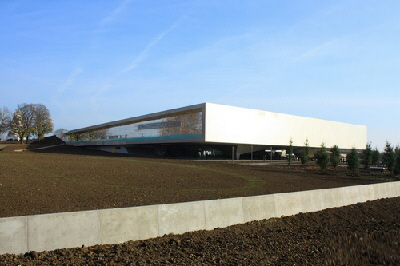
Le Musée
The bus lets visitors off quite a distance from the museum entrance, at least for us 60 year-olds. Part of this again is due to the early opening of the museum, a modernist structure which sits on a treeless field. Eventually, paved pathways will no doubt lead to the museum from the bus stop. We visited the museum during record-breaking cold weather, and as we entered the museum, we found that the heat had failed. This somewhat colors the following review.
As one enters, one is encouraged to experience an introductory "film" which is sort of a visual time machine going from the present through major events back to 1870, the starting point for the museum. This is a portent of the high-quality graphics used throughout the museum. The first rooms of the museum deal with the impact on the French psyche of the loss of Alsace-Lorraine as a result of the Franco-Prussian War. The museum does an excellent job conjuring up the sentiment of that age, and how these emotions affected political decisions at the onset of the war. The museum's graphic displays and written signage are adept at conveying (in English, French, and German) the excitement of the mobilization, as well how certain elements, whether it be tactics or individual weapons systems, played a part in the war.
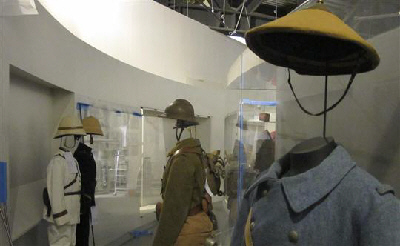
Uniform Display
As one emerges from the displays of late 19th-century politics, the rest of the museum provides a series of exhibits displaying artifacts of the conflict organized around different themes: communications, propaganda, military tactics, involvement of troops from the colonies, and daily life in the trenches. Particularly moving are artistic items fabricated in periods of boredom from shell casings, hand weapons, etc. Throughout the museum, a number of uniforms in excellent condition from various combatants are displayed as well.
In several rooms there are educational digital presentations that thoroughly explain such things as merits of new weapon systems. A noteworthy innovation is the use of WiFi screens which demonstrate, for example, the firing sequence for an older artillery piece and for the French 75mm. This was the first time we were shown so well the superiority of the newer artillery. Aircraft displays are limited to two: a SPAD XIII and a Bleriot monoplane. There are also a number of interactive maps showing the war's timelines.
We spent about two hours in the museum going through each exhibit despite having our hands in our pockets to ward off the cold. It is our hope that when the logistical issues are resolved—and these would be minor had it not been deep winter—this museum will become in time a grand success, and we highly recommend it to all. John and Gail Howell
2. The Traveling Roadshow of the National World War I Museum
Coincidentally, just as we received the Howells' report, reader Anne Steele sent photos of her own visit to the traveling exhibit of the National World War One Museum (in partnership with Waddell & Reed) at Redwood City, California on 10 February. The display is borne on a customized 18-wheel "big rig" truck. It stops near a variety of local museums and cultural institutions, like the San Mateo County Museum, to raise awareness about the coming centennial of the Great War and the National Museum in Kansas City.
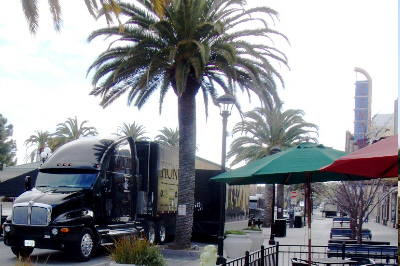
Open for Business
Dubbed the "Honoring Our History" tour, the unique traveling museum offers an outstanding and free introduction to the war's history and artifacts. Naturally, however, contributions are accepted at each stop from visitors, and they will are divided equally between the local museums and the National World War I Museum.

EntranceFrom Anne Steele
3. Europeana: 1914-1918
Another discovery was brought to my attention by the lady in my life, and browsing sleuth, Donna Wagner. I guess you might describe what she found as a virtual, online museum for the war.
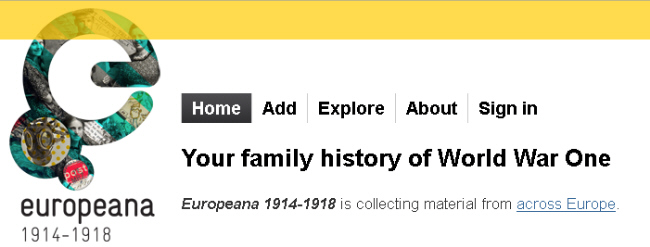
Europeana 1914-1918 is based on an initiative at University of Oxford where people across Britain were asked to bring family letters, photographs and keepsakes from the war to be digitized. The success of the idea—which became the Great War Archive—has encouraged Europeana, Europe’s digital archive, library, and museum, to bring other national or local institutions across Europe into an alliance with Oxford University. The project is collecting memorabilia and stories from the period of the Great War (1914-1918). This phase of the project is focusing on European items: letters, postcards, photographs, and stories from Germany, Luxembourg, Ireland, Slovenia, and the UK. Contributions can be made via the website or at special collection events to be scheduled. Just click on the image above to visit the site.
|
|
|
|
Subscribe to Our Online Magazine
|
|

|
|
|
Page Three
|
|
|
World War I Headlines
in the 21st Century
|
|

The Sieges of Przemysl — 1915
The whole of the Great War can with some justification be considered to have been an almost continous four-year-long siege of forts. There were many famous siege operations on the Western Front conducted against fortress cities and encampments, such as those against Liège, Antwerp, Maubeuge, and Verdun. Fortresses played a critical role on the Italian Front. In the Far East, the German concession at Tsingtao in China was besieged by Japanese and British forces, while on the Eastern Front both Russians and Austrians possesed numerous fortified cities and encampments that were at times bitterly fought over. The two sieges of the Austro-Hungarian fortress city of Przemsyl (now in present-day Poland) took place during the first year of the war, but are, today, little known for all their otherwise dramatic content. The photo below shows the present day state of Fort #25 at Przemysl. TL
|
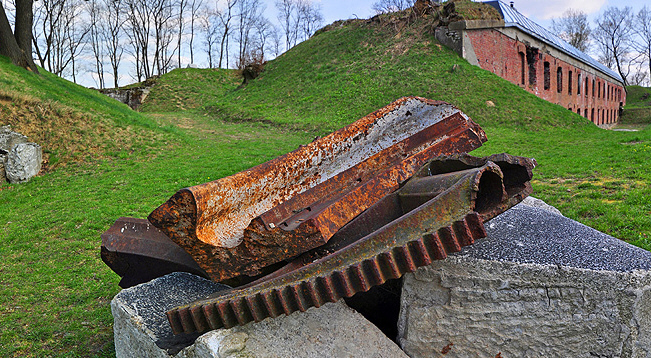
Click Here to Access the Tremendous Body of Photos and Articles Tony Langley Has Gathered About Przemysl.
|
|
|
|
Chauchat Automatic Rifle
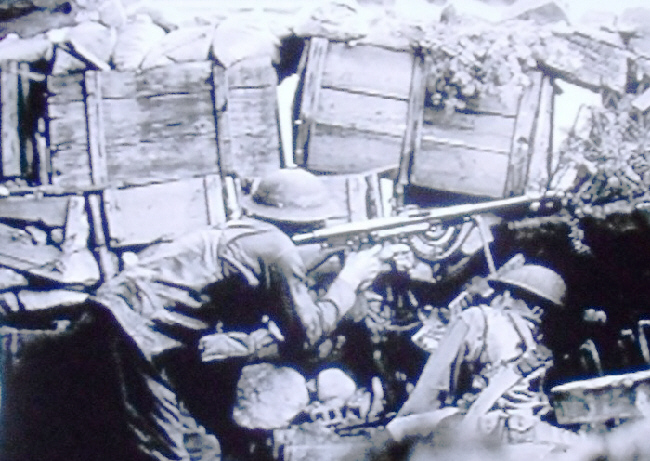
|
French troops were equipped with the relatively slow firing (250 rounds/minute) automatic Chauchat rifle after 1916. While it was never fully reliable, French infantry appreciated having it available. However, it gained an especially bad reputation within the AEF. U.S. soldiers, like those shown above, developed an intense dislike for the weapon. The version of the Chauchat distributed in greatest quantity to the AEF was rechambered for larger .30caliber ammunition, which required a modified magazine. These changes magnified all the design problems of the weapon. In late 1918, the superior Browning Automatic Rifle was distributed to some American units, and would have replaced the Chauchat in all units for the 1919 campaign.
|
|
|

|
 |
Two Letters from 1917 That Still Resonate
|
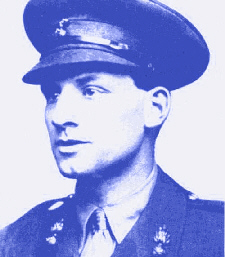
Siegfried Sassoon |
Published in the Times, 31 July 1917
I am making this statement as an act of willful defiance of military authority because I believe that the war is being deliberately prolonged by those who have the power to end it. I am a soldier, convinced that I am acting on behalf of soldiers. I believe that the war upon which I entered as a war of defence and liberation has now become a war of aggression and conquest. I believe that the purposes for which I and my fellow soldiers entered upon this war should have been so clearly stated as to have made it impossible to change them and that had this been done the objects which actuated us would now be attainable by negotiation.
I have seen and endured the sufferings of the troops and I can no longer be a party to prolonging these sufferings for ends which I believe to be evil and unjust. I am not protesting against the conduct of the war, but against the political errors and insincerities for which the fighting men are being sacrificed.
On behalf of those who are suffering now, I make this protest against the deception which is being practised upon them; also I believe it may help to destroy the callous complacency with which the majority of those at home regard the continuance of agonies which they do not share and which they have not enough imagination to realise.
Lt. Siegfried Sassoon
3rd Battalion, Royal Welch Fusiliers
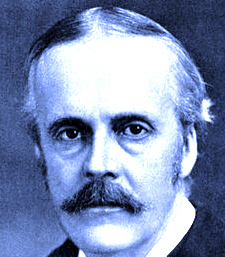
Arthur Balfour |
Foreign Office
November 2nd, 1917
Dear Lord Rothschild,
I have much pleasure in conveying to you, on behalf of His Majesty's Government, the following declaration of sympathy with Jewish Zionist aspirations which has been submitted to, and approved by, the Cabinet.
"His Majesty's Government view with favour the establishment in Palestine of a national home for the Jewish people, and will use their best endeavours to facilitate the achievement of this object, it being clearly understood that nothing shall be done which may prejudice the civil and religious rights of existing non-Jewish communities in Palestine, or the rights and political status enjoyed by Jews in any other country."
I should be grateful if you would bring this declaration to the knowledge of the Zionist Federation.
Yours sincerely,
Arthur James Balfour
|
|













